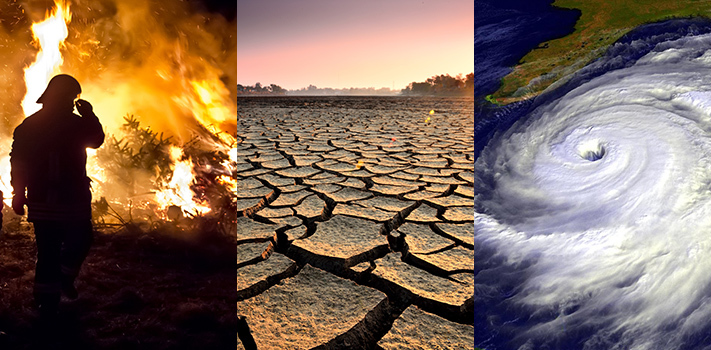At present India is experiencing diverse climatic conditions due to climate change. Some parts are craving for monsoon while others are experiencing flood. Delhi has been reported 74% monsoon deficit, the highest in the country, followed by Manipur with 60% and Gujarat with 45%, while flood continued to wreak havoc on the other parts of the country like Assam, Bihar and U.P. Around 6.93 million people have been affected as thousands of villages have been marooned. The Kaziranga National Park, home to the one horned rhino, was severely hit with 95% of the area under water and 17 animal deaths due to rain-related incidents in last one week. Kerala is on red alert due to the influence of the south west monsoon.
Heavy monsoon showers accompanied by high speed winds finally hit the capital on July 15 which brought relief to the citizens. The weather brought down temperature from 34°C to 25°C within the span of a few minutes. The Indian Meteorological Department (IMD) Safdarjung observatory recorded 29.2 mm rain till 8:30 pm. At Palam, it was 26.5 mm. There was only 38 mm rainfall in the period June 1 to July 14. The mean rainfall in June in the last 10 years is 82.2 mm and 187.3 mm in July.
Indian summer monsoon typically lasts from June-September, with large areas of western and central India receiving more than 90% of their total annual precipitation during the period, and southern and northwestern India receiving 50%-75% of their total annual rainfall. Overall, monthly totals average 200-300 mm over the country as a whole, with the largest values observed during the heart of the monsoon season in July and August.
According to IMD’s bulletin, the monsoon trough had moved to the Himalayan foothills for the past one week. It rained heavily in the northeastern states, sub-Himalayan west Bengal, northern Bihar, some part of UP during the past week but now the trough is moving back towards north west India which is leading to rains and thunder shower in part of Punjab, Haryana, Delhi and Chandigarh, while rains gradually dissipate in the foothills. The central water commission on its website has forecast worsening of flood situation in 51 of the 350 location across the country monitored by the central agency.
This year’s monsoon came late and progressed slowly. This is bad for crops also as farmers have not started sowing the Kharif (monsoon) crops till now. Also because of the delay in sowing, the paddy crops are still in transplantation stage and heavy showers are destroying crops. Today, drought and floods are a common feature and their co-existence posses a potent threat which cannot be eradicated but has to be managed. Transfer of surplus monsoon water to areas of water deficit is a potential possibility. This would also help create additional irrigational potential and generation of hydropower, as well as overcoming regional imbalances.
- Climate Change Responsible for Erratic Monsoons, Floods, & Droughts in India - July 24, 2019
- World Environment Day: 10 Steps to Save the Planet - June 6, 2019
- Plastic Pollution Essay: 7 Steps to Reduce Our Plastic Footprint - April 4, 2019
- Municipal Waste Management: India Must Use Innovation and New Tech - April 3, 2019
- Ganga Pollution is Killing the Ganges, India’s Most Sacred River - January 12, 2019

